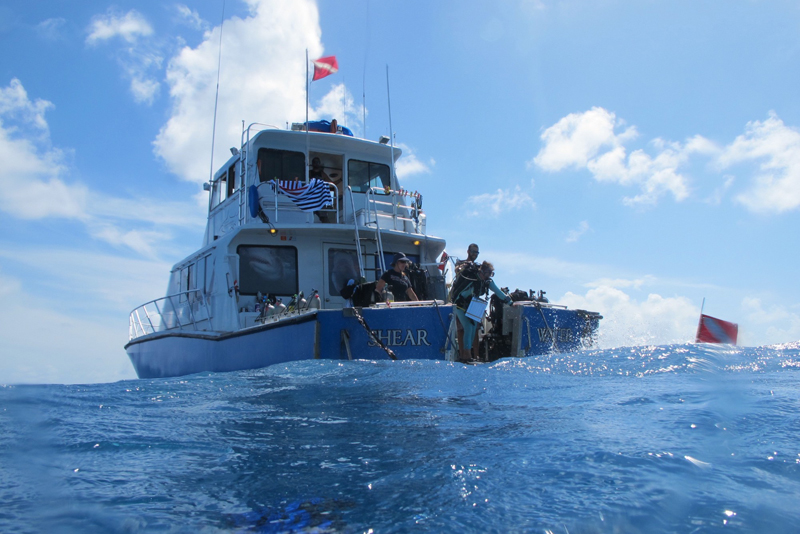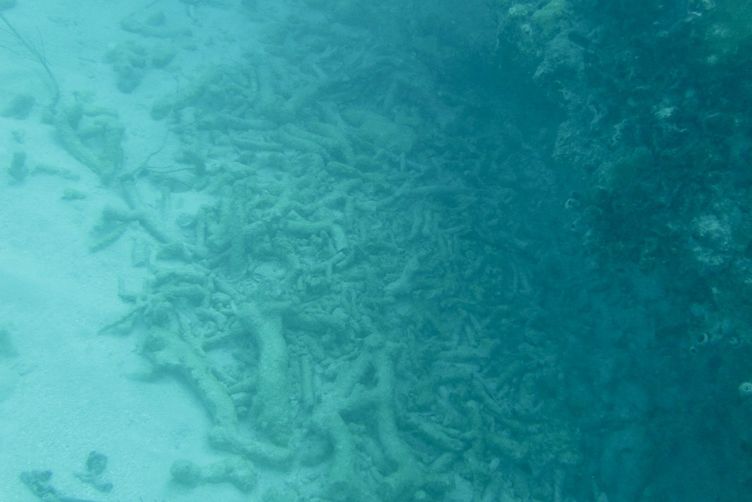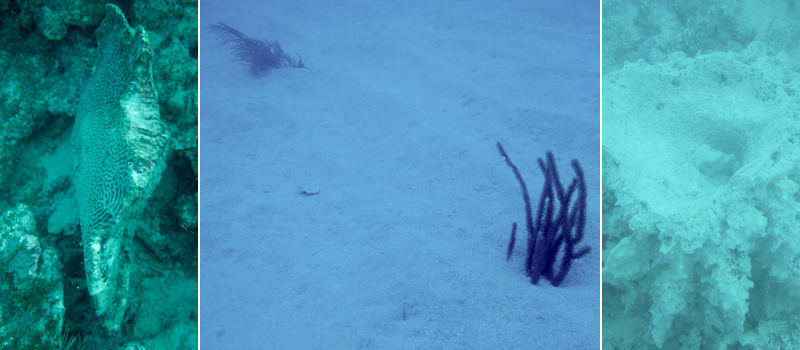Hurricane Irma Wreaked Havoc Under the Sea, Too
The historic hurricane ravaged the United States’ only living barrier reef, says scientist who witnessed the damage
Ten years of diving on and surveying reef zones should have prepared me for what I would see post–Hurricane Irma in the Florida Keys, which boasts the only living barrier reef in the continental United States. When I received notice that I would be one of 14 scientists on a 12-day data collection cruise spanning over 250 nautical miles, I thought I had certain expectations about what I would observe — but the damage I witnessed during the National Oceanic and Atmospheric Administration (NOAA)–led survey was unlike anything I could’ve imagined.

Hurricane Irma, the strongest Atlantic storm since Wilma in 2005, made direct landfall on the Florida Keys as a Category 4 storm on September 10 with the right side of the eye hitting Big Pine Key in the Lower Keys. Ten-foot storm surges and winds over 130 miles per hour caused damage on land and underwater on the coral reef system that runs from just north of Miami all the way down to Key West. Scientists from a number of organizations, including NOAA, the Nature Conservancy, the Florida Fish and Wildlife Conservation Commission, the Coral Restoration Foundation, and many others realized that this storm likely caused extensive damage to this incredibly important ecosystem, already weakened by numerous global and local stressors. In about a week, plans were made, with funding from the National Fish and Wildlife Foundation, to send out a crew of scientists to observe the damage, to be able to provide triage recommendations for a restoration team on how best to remedy damage where necessary.
While hurricanes and other periodic disturbances have historically been beneficial for increasing species diversity in ecosystems such as reefs, the current vulnerable state of reefs spurred an immediate restoration effort following Irma.

From collecting data for NGOs and for my own educational and research work throughout Caribbean reefs, I have seen the increasing negative impacts of global climate change (increasing temperatures and acidity) and local stressors (overfishing, pollution, coastal development). Now many reefs exhibit low coral cover, disease-riddled colonies, and higher algal and sponge cover — which, in turn, has lead to a reduction in the many benefits reefs provide for us — including protection from erosion of shorelines due to wave energy retention, habitat for commercially and recreationally fished species, and attractive destinations for tourists. Reefs such as those in the Florida Keys have effectively been weakened from all these stressors, and recovery after an exceptionally large disturbance like Irma will either be incredibly slow, or impossible. With climate-change models predicting an increase in the frequency and strength of Atlantic hurricanes, bolstering reef health and strength now via direct intervention could be key to their future survival.
So, I set off to West Palm Beach in Florida to meet the other scientists aboard the M/V Shear Water, owned and operated by world-renowned conservation photographer Jim Abernethy. We set out down the coast, surveying over 50 reef sites previously chosen for their “high value” (based on previous coral cover surveys and management protection).
At each site, divers collected different data sets, including coral and fish counts, along with photos and videos, which would later be combined into a large map-driven database for us to reference. After each dive, we discussed what we saw and classified each reef into one of three triage recommendation tiers based on damage and restoration potential.

During nightly conference calls back to land from our boat, we provided recommendations to the restoration teams following us about which sites could benefit from immediate intervention: such as the removal of marine debris, the unburying and up-righting of corals, the reattachment of corals to the hard bottom with cement or epoxy, and in some cases, the rescuing of coral tissue to alternative reef sites. Some of the most striking damage I witnessed included entire sections of a mangrove forest entangled with lobster traps and buoys deposited on top of a reef in 60 feet of water, huge three-foot-diameter barrel sponges that looked like they were slashed with a machete, a fine white sediment coating the reefs that conjured images of a snowy winter wonderland rather than a colorful tropical ecosystem, corals buried in sand dunes, parts of the reef framework fractured as if an earthquake hit, and toppled boulders the size of a Volkswagen van with live coral crushed underneath. Of the over 50 sites surveyed, 14 were recommended for triage work, many of which are popular tourist destinations. Restoration teams have conducted work at 8 of these sites, at which over 1,000 corals have been stabilized.

With a full report from the project collaborators expected in late 2017, this expedition could indicate whether similar surveys and restoration efforts following future high-impact hurricanes is effective. I have hope that the efforts of our survey team and the ongoing restoration efforts will accelerate the recovery of this incredibly important and special ecosystem.
Katey Lesneski (GRS’18) is a marine biology PhD candidate at the Boston University Graduate School of Arts & Sciences.
Comments & Discussion
Boston University moderates comments to facilitate an informed, substantive, civil conversation. Abusive, profane, self-promotional, misleading, incoherent or off-topic comments will be rejected. Moderators are staffed during regular business hours (EST) and can only accept comments written in English. Statistics or facts must include a citation or a link to the citation.